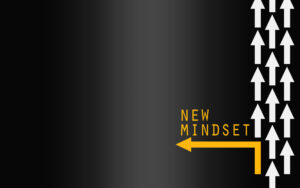 Disruption.
Disruption.
The word “disruption” accurately, clearly, and succinctly describes what we’re now dealing with in today’s world. To say it another way, the new normal is disruption. This is the word I’ve been searching for since posting this blog, Good-bye to the “new normal.” Hello to what?, on May 23, 2020, two days before George Floyd’s murder.
Jim Tompkins, the supply chain expert, successful entrepreneur, and best-selling author, has just written a book with Michael Hughes about disruption and its impact and continued influence. According to Tompkins, the chaos of the last three years, namely COVID-19 and digital innovation, combined with geopolitical and financial crises, has accelerated history into a world where disruption is the new normal.
As Tompkins explains in the new book Insightful Leadership: Surfing the Waves to Organizational Excellence, stability has become a relic. “Whatever new normal you finally figure out will soon be swept away by the waves of the future,” Tompkins predicts.
The implications of exchanging stability—or even just the semblance of stability—for disruption are huge. Leaders need to recognize that their role has changed. Rather than struggling with disruption and trying to tame it, they need to rewire their mindset. Leaders need to welcome, even embrace, disruption “as a force that compels us to innovate.”
To work effectively with disruption, leaders also need to understand that they must move away from optimally designing their businesses. Now they must move toward catching opportunities, which Tompkins calls “the waves” of disruption. “The path forward is not about optimality, but optionality. Optionality will allow enterprises to absorb major changes in the market and nevertheless be successful.”
Options are good, as humans like choices. But too many choices can be overwhelming. And it can be hard to narrow your options, decide and get all team members aligned behind the way forward. So how do you achieve “optionality”? Look for and catch opportunities, called “waves” of disruption. Tompkins encourages insightful leaders to practice two actions regularly: 1) seeing around corners to find opportunities and options and 2) then surfing the waves.
To see around corners, leaders need to look for and become knowledgeable about trends that are outside of their wheelhouse. This involves watching what’s happening in different industries, regions, demographics, societal changes, popular culture, science, politics, and anything else that might influence you.
Then to surf the waves, leaders need to position their organizations to take advantage of tipping points in the trends they’re tracking, including making necessary shifts. Tompkins also advises harnessing the power of the waves to ride into the future with innovations.
These surfing metaphors feel out of place in a business book. However, Tompkins’s messages are credible, especially about leading in our now BANI (Brittle, Anxious, Non-linear, and Incomprehensible) world. Tompkins has an accomplished 50-year track record in which he’s been continually reinventing himself.
According to a Medium interview, Tompkins’s story has been one of “success, innovation, entrepreneurship, and bigger success — repeated again and again” as he iterates on past experiences. He began as a professor, moved into logistics, switched to supply chain consulting and material handling, expanded into global supply chain, transferred to networks, and then broadened into leadership. As he starts each reinvention, he said he decides which wave he wants to surf. Then he combines his past experiences with what is happening in the present and then what he anticipates will happen in the future.
As he reinvents himself and surfs new waves, Tompkins remains grounded on three leadership-related points:
- Leadership practices. Tompkins stresses that most pre-2019 leadership practices have become obsolete. He maintains that organizations need to reconsider how they do so many things, including onboarding staff, communicating, collaborating, using technology, and adapting to different work practices, processes, and technologies. The latter involves where and how employees work, including remote options.
- Character traits/values. Three have served Tompkins well throughout all of his reinventions: integrity, passion, and innovation.
- People interactions. Tompkins emphasizes that people interactions are the key to doing good. And the qualities he regards most are respect, listening, understanding other’s views, honesty, integrity, telling the truth, caring about others, lending a helping hand, being kind, being considerate, being polite, being innovative, thinking outside the box, lifting someone up, being engaged, being accountable, and taking action.
So how about it? Are you ready to deal with disruption in our BANI world? Unbuckle and throw away your seat belt. Confirm your values that will guide you. Embrace disruption. Look around corners. Find options. Make shifts. Innovate. And adapt to keep the process going. And if you want support along the way, reach out to me.

0 Comments